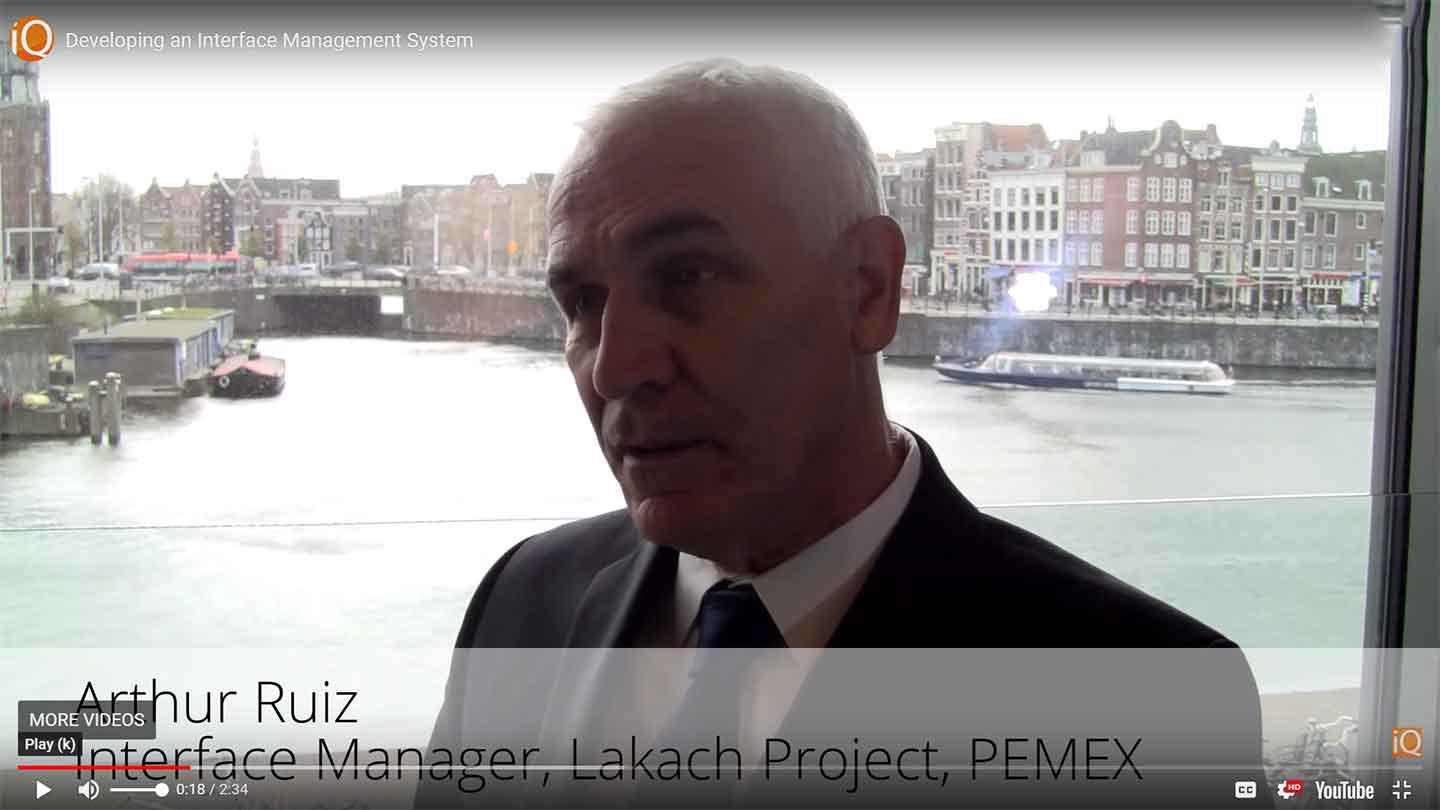
Owner Oversight Across Internal & External Interfaces
We asked three professionals with interface management expertise the question: How involved should owners be when it comes to managing interfaces? The following is an excerpt from a CII webinar where Olivier Calas outlines how his team acted as the main contractor for a major offshore project that required implementing an interface management program supported by an automated software solution.
A Closer Look at Owner Oversight Across Internal and External Interfaces
By Olivier Calas, Interface Manager
 Mr. Calas is an interface manager for McDermott International*, one of the main EPCI contractors for offshore oil and gas projects illustrating how owner endorsement was successfully implemented across an interface management system that managed both internal and external interfaces.
Mr. Calas is an interface manager for McDermott International*, one of the main EPCI contractors for offshore oil and gas projects illustrating how owner endorsement was successfully implemented across an interface management system that managed both internal and external interfaces.
For the offshore project Olivier discussed in the webinar, both internal and external interfaces were being managed by one system and owner oversight was implemented within both external and internal interfaces as well as spanning across the project. In terms of defining an owner endorsement model, Olivier outlined the need to include a process that provided owners with greater oversight on project interfaces and described their model as follows.
Owner Endorsement for External Interfaces
For external interfaces on this project, the owner chose to have more control by endorsing interface agreement requests from all contractors, included McDermott. The endorsement model gave the owner the ability to review and approve a request from a contractor prior to the reception of the request by any other contractor on the project.
To help illustrate how this process worked, let’s look at an example of an interface request between two contractors.
 Figure 1: Managing owner endorsement with external interfaces
Figure 1: Managing owner endorsement with external interfaces
In this example (see figure above), McDermott, the FPU (Floating Platform Unit) contractor, needs information from the Pipeline Engineering contractor. McDermott FPU sends the request to be checked by the client (i.e. the project owner) – represented at the FPU Endorsement diamond on the diagram. If the request is relevant, the client endorses it and then it gets forwarded to the correct contractor, Pipeline Engineering. The answer back from the pipeline contractor will flow in the reverse way, going first to the client and then to FPU McDermott. Owner endorsement adds one more step, possibly slowing the process, but in exchange gives the client more oversight and control of project interfaces.
Owner Endorsement for Internal Interfaces
Let's now see the architecture of the internal interface management system and how owner oversight is applied. Here, McDermott managed internal parties in a similar pattern as the project owner did in the previous example.
 Figure 2: Managing owner endorsement with internal interfaces
Figure 2: Managing owner endorsement with internal interfaces
You can see from the figure above that the Topside and T&I packages are managed by McDermott directly. Managing interfaces internally can be between two different engineering centers, for example. In the same fashion as the owner, McDermott applied rules of owner endorsement to better monitor some of their own subcontractors. The Hull subcontractor had a long term relationship with McDermott, therefore endorsement of requests to and from this party was not necessary.
Here, the LQ (Living Quarters) subcontractor needs information from the Topside engineering team. Like the above external example, the LQ subcontractor will send a request that will be checked by McDermott LQ specialists (i.e. the owner endorsing the request represented at the LQ Endorsement point). If the request is relevant, then McDermott endorses it and then it gets forwarded to Topsides. The answer from Topsides will flow the same in the reverse way with McDermott LQ Endorsement receiving it first and then it gets sent to the LQ subcontractor.
Owner Oversight Across Project Interfaces
Lastly, let’s look at an example of how this project managed interface requests across both internally and externally managed interfaces. This project’s interface management system integrated internal and external interfaces on one platform allowing for the owner endorsement process to be automated and configured for both internal and external. See the figure below.
 Figure 3: Managing owner endorsement across internal & external interfaces.
Figure 3: Managing owner endorsement across internal & external interfaces.
In this example, an external contractor needed information from a subcontractor that was managed by McDermott. The implemented system enabled this process while applying appropriate confidentiality rules that keep all communications only visible to appropriate parties.
Here, the Subsea contractor needed information about the FPU Hull. The Subsea external contractor sends a request to the FPU contractor that will be checked by the client/owner first (Subsea Endorsement and FPU Endorsement). If the client finds the request to be relevant, it then gets forwarded to FPU McDermott. At this point, the Interface Manager for FPU will forward the request to the correct internal package, which in this example is the Hull subcontractor. When ready, the Hull subcontractor issues the response; which will first be reviewed/endorsed by the interface manager for FPU before being sent back to the Subsea contractor. The answer will flow in the reverse way and McDermott will be able to check the answer prior to being sent to the external contractor.
Owner Endorsement Enabled by Automation
I hope this example gives you a good overview of how a fully integrated system can work on complex projects. On large and complex projects, an automated workflow is key to success – including when implementing owner endorsement. Automation speeds up the communication process and reduces mistakes.
More on Interface Management & Owner Endorsement
To read more on the topic of owner endorsement from other interface management experts, be sure to check out the full Ask and Interface Manager series.
*At the time of the webinar, Olivier Calas was an interface manager at McDermott International.




